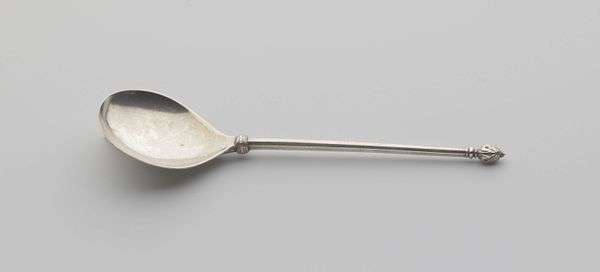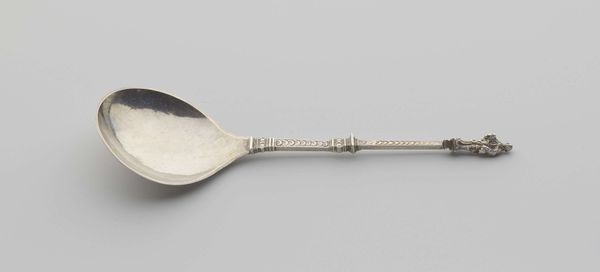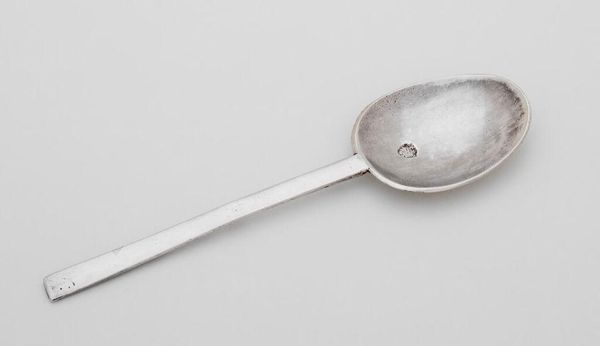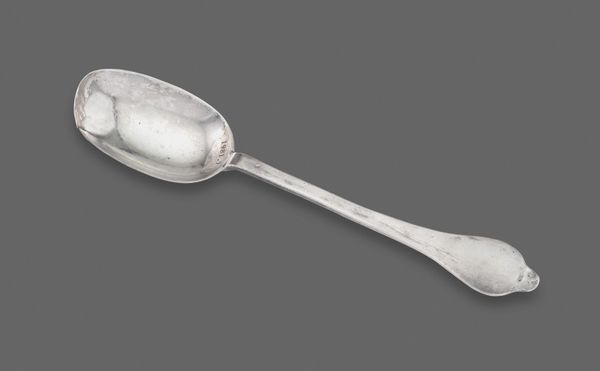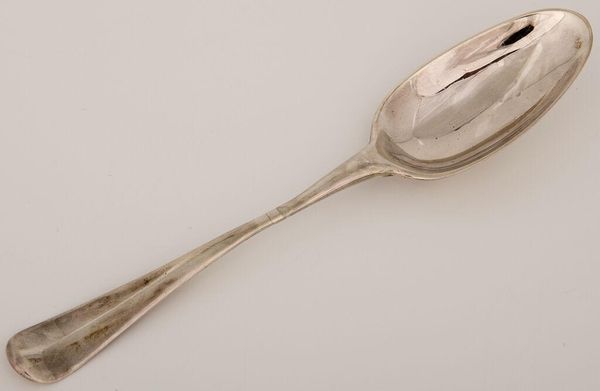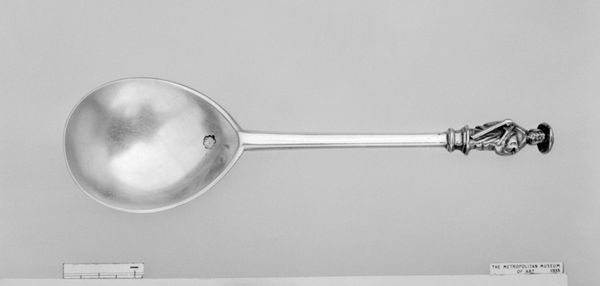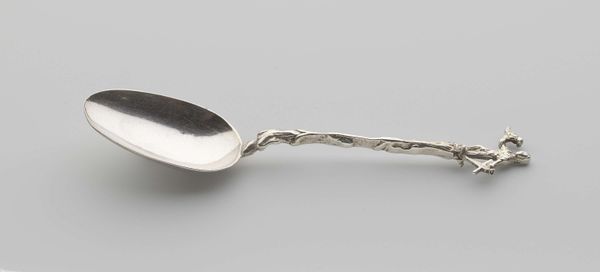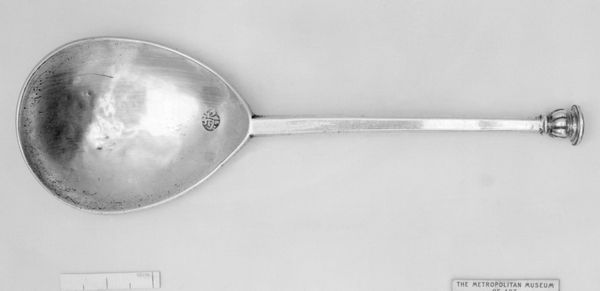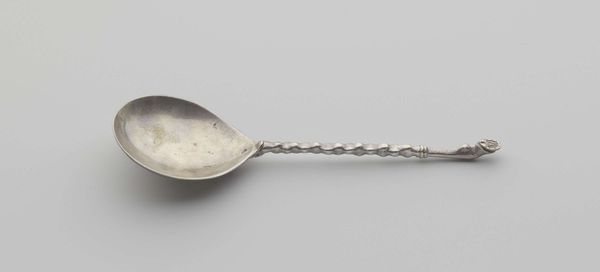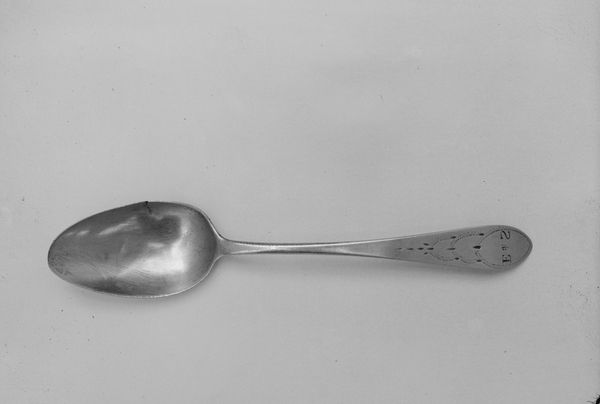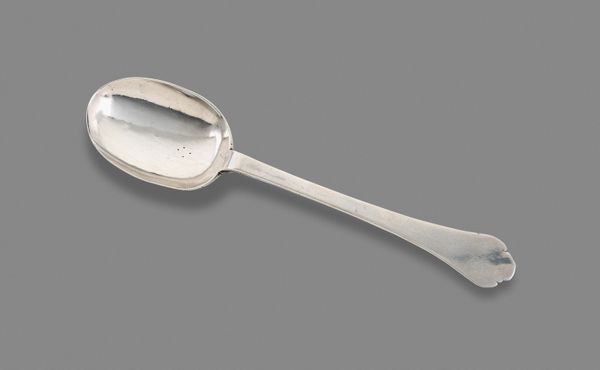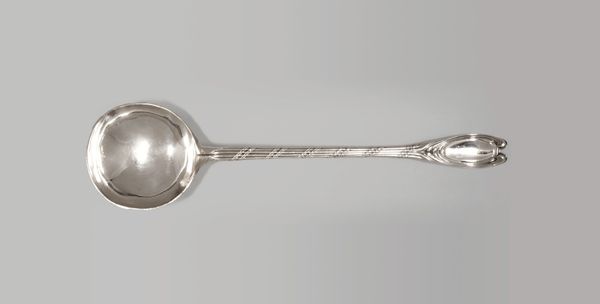
metal
#
metal
#
decorative-art
Dimensions: 6 3/8 x 1 7/8 x 1/2 in. (16.19 x 4.76 x 1.27 cm)
Copyright: Public Domain
Curator: We are looking at a metal spoon from approximately the 18th century, part of the decorative arts collection here at the Minneapolis Institute of Art. What strikes you about it? Editor: Immediately, the condition. It's worn, almost battered. The material suggests a certain coldness, but its very function implies an intimacy with the body. There's something intriguing in that contrast. Curator: Absolutely. And what is fascinating about such objects is that they provide glimpses into the everyday lives of people in the past. Consider the craftsmanship involved in making even a simple spoon like this one, the social systems of dining, and its value as it was circulated as material in different cultures. Editor: Yes, the labor involved is key. Metalwork wasn't easily or quickly done. The resources extracted from the earth, the smith’s skill… It speaks of a pre-industrial understanding of materiality, something that gets lost when we think of mass-produced objects today. And it looks repaired? Clumsily? I wonder if this object has transitioned across social and economic echelons. Curator: It does look like it might have been repaired at one point. I like the detail in the handle design. Editor: I notice also the shape isn’t quite symmetrical—the bowl seems almost organic, definitely hand-wrought. Imperfection is lovely. The metal shows every mark it has made through life. I’d even be so bold to ask whether there are social narratives inscribed into it based on how it looks now, like evidence of use. Curator: And consider that decorative arts like this, even seemingly mundane ones, were often subject to trends and fashions, subtly signaling status and taste within a specific social milieu. This makes objects like spoons, glasses, vases so informative to see as part of art history today. Editor: It's really fascinating to reflect on what that everyday object must have tasted like. The materials available to feed off the spoon itself—which brings us back to those questions around materiality. Curator: Absolutely. When looking at the spoon within a broad social, cultural and historical landscape, we learn far more. Editor: Well said.
Comments
No comments
Be the first to comment and join the conversation on the ultimate creative platform.

